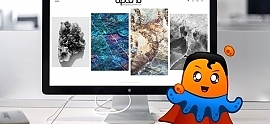Before you built your website, you probably heard the same thing over and over. "You need to have a website! It will turn your business around! You won't know what to do with all the new customers!"
While a website is a necessity, it's not as simple as it seems. The world wide web is a competitive place, and your website needs to be up for the challenge if you want it to bring in business.
If your site isn't performing the way you want it to, chances are that you're making some design mistakes. Do you have any of these common problems of poorly designed websites?
Hallmarks of Poorly Designed Websites
No matter how much money you spend on building a website, certain design mistakes can make it ineffective. Take a look at this list and see if your site features any of these common problems
1. Slow Loading Times
One of the most important aspects of your site's design is how well it functions. We live in a world of short attention spans and finding quick answers. If your site takes too long to load, your users will set their sights elsewhere. They don't want to sit around waiting for a site that might never load.
How long is too long? It only takes three seconds of loading time for 40% of your users to leave. Some businesses go over that threshold because they're trying to add modern, high-tech features to their site. Focus on usability first and impressive tools second.
2. Giant Blocks of Text
Think back to when you were in school and you had to read textbooks. Remember how annoyed you were when you turned a page and saw that the page ahead was a giant block of dense text?
That's the same way your users will feel if they arrive on a page on your site that has too much text. We're not saying that your site should be vague and uninformative. Instead, you need to break up your text with subheadings and be selective in the details you offer.
In the same way, make sure your text is big enough to be easy to read as well. If users need to strain their eyes to read your content, they'll leave in search of greener pastures.
3. A Mystery
One of the biggest frustrations for many internet users is being unable to figure out what a company does. The "above the fold" section of your website refers to the part of your homepage that users see when they first arrive on your site. Within that area, it needs to be clear what your business does.
Don't make your users guess who you are or what you're doing. Be upfront and make your site easy to understand.
4. Poor Mobile Performance
If you think of your mobile site as an afterthought, it's time to change your approach. Today, 57% of web traffic comes from mobile devices. To cater your site to the majority of your users, mobile performance should be a priority.
In fact, you shouldn't even have a "mobile site" that's separate from your desktop site. Instead, you need to use a technique called responsive design which makes your layout look great on any screen size.
5. Pages That Go Nowhere
This is one of the more subtle web design issues that take away from a site's success. We're not talking about broken links, because that should be an obvious problem.
We're talking about pages that don't guide a user to take action. As important as it is to be an informative source, you should never end a page without inviting users to take the next step.
To do this, you should have a call-to-action on every page, and it should be prominent and noticeable. You could add a "contact us" or "shop now" button. Something as simple as a line at the end of your content that says, "call us for more information," can suffice.
6. Hidden Contact Information
It's true that not everyone will pay attention to your calls-to-action. They might visit your site for information alone a few times, then decide that they want to contact you to make a purchase.
For users like these, you need to make it as easy as possible for them to find out how to reach you. If a customer can't find your phone number or figure out where to go from a single glance at your homepage, you have a problem.
You can fix this problem with a simple "Contact Us" link in the main navigation menu on your site.
7. Non-Descriptive Page Titles
Let's stick with that theme for a moment: making it easy for users to find the information they want. It applies to more than your contact information.
When you're planning your navigation menu, make sure each link's text gives an accurate picture of the page it links to. If they don't, users will end up on a page that doesn't offer the information they want. That's a recipe for a frustrated user who's about to leave your page, hurting your bounce rate and the user's opinion of your company.
8. Minimalist Design (The Wrong Way)
You've probably heard plenty of web designers recommend a minimalist design as a great strategy for websites. They're right. Being selective in your content and using white space to your advantage can make your site look polished and make it easy to navigate.
The problem comes when companies apply a minimalist approach to the number of pages on their site. On the surface, the site looks like any other, with a homepage and a navigation menu at the top. Instead of that navigation menu linking to separate pages, though, you realize the whole site is one page and the menu links are anchors on that page.
This technique can look disorganized and overwhelming to a user. Worse yet, it puts severe limits on your search engine optimization success.
Knowing the Mistakes to Avoid
When you first start the web design process, you might be full of motivation, excitement, and creativity. Before you jump in headfirst, though, it's important to know what NOT to do.
Steering clear of the signs of poorly designed websites above can help you make the most of your site. If you're ready to get started, reach out to our custom website builders today.




 View Printer Friendly Version
View Printer Friendly Version








